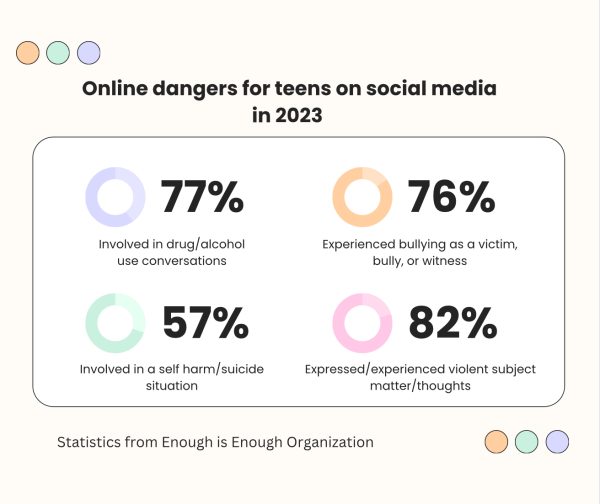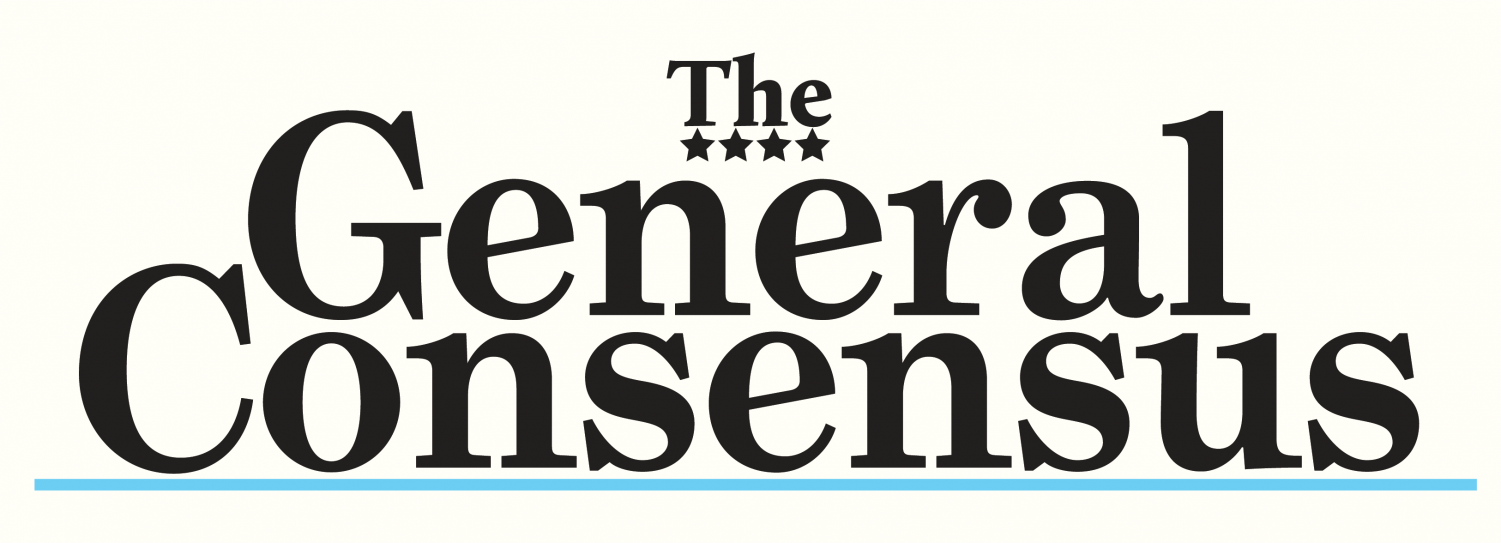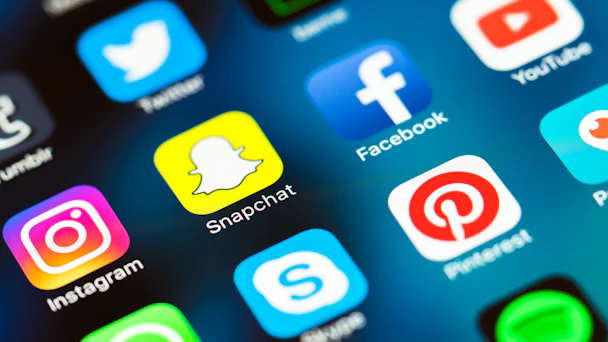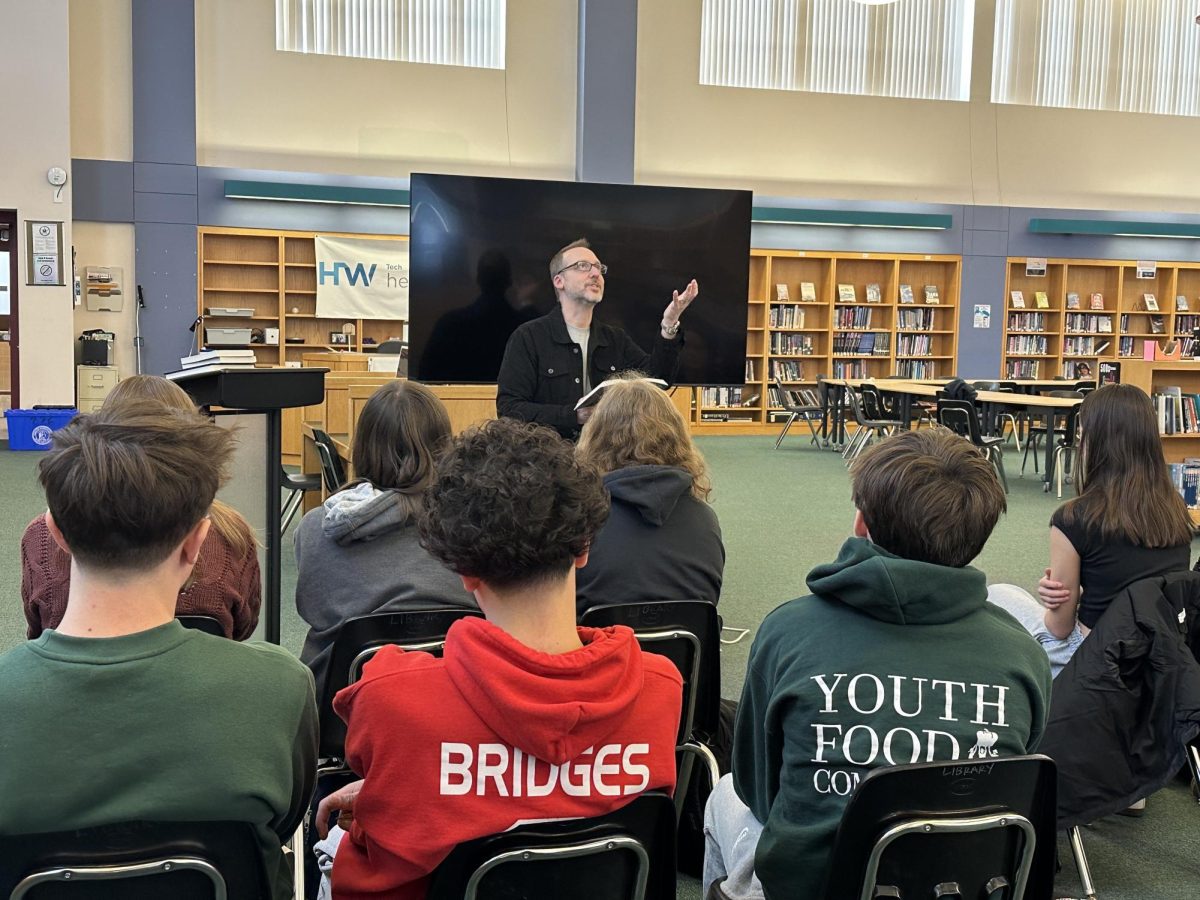As technology advances and the media develops, the exploitations of social media are increasing exponentially. The media has created problems and risks ever since it became accessible to the public.
Companies, apps, and corporations all use media exploitation, specifically on social media, to promote their agendas. They use the apps and their irresistibility to their advantage. As social techniques are advancing, the advertisements on social media are increasing.
As more adolescents download apps and use them daily, the more they support the advertising. Clicking on advertisements and buying advertised products contributes to media exploitation.
Media exploitation refers to people using the media to manipulate information to appeal to a specific audience, which in turn furthers their agendas, whether it be social, political, or economical.
However, teens who use social media are more likely to experience the unpleasant side of the media.

A 2023 study that focused on online dangers by Enough is Enough Organization found that 77% of teens engaged in conversations regarding drug and alcohol use.
The same study reported that 76% of teens who use social media experienced bullying as a bully, victim, or witness, and 57% of teens were involved in a self-harm/suicidal situation.
According to Seattle Children’s research, using social media can lead to online harassment, cyberbullying, and anxiety. It can perpetuate eating disorder behavior, substance use, and depression.
In the marketing business, companies use advertising to promote their products. Media exploitation can have positive and negative effects.
“In the marketing world, social media exploitation can be used strategically,” said Farzad Atif, a Marketing Technology Manager.
“In marketing, there are many different kinds of channels you can go through to get your brand or product to the market. One thing that I’m seeing and a lot of people are seeing these days is social media. Specifically, Facebook, because it has such a wide user base, and can reach so many people within the U.S. and internationally just by advertising your product or service through Facebook ads” said Atif.
The algorithms of social media apps are made to keep feeding content based on what users spend time looking at. The more users like subjects on the apps, the more the apps will show similar content.
Atif said, “If you are looking for a new pair of shoes and you Google that, it’s not exactly ethical, but Facebook has the means of seeing your search history, and then they’ll feed you advertisements for other shoes and other brands of shoes on your Facebook feed. Definitely not ethical, but businesses only care about their own corporate degree, so they’ll kind of push the envelope to sell their agenda, to sell their product.”
This applies to all social media platforms that share information through videos, comments, ads, and photos.
Atif continued to discuss companies’ access: “Right now, there aren’t enough laws and regulations in place to make sure that products and advertisements that are being fed to people on social media have a certain limit. People’s search history and their conversations are all open to the highest bidder. Whoever’s the highest bidder can have access to that information, and they can pay for that. Because the conversation is being exploited, they can serve different advertisements.”
Despite the risk of information being exploited, in marketing, “if you have a certain message you are looking to get across to a wide audience base and you need some sort of charitable help, social media is a good way to go about getting your voice out there and get some anonymous people to help you out.” This is one way that Atif said the media can be useful; however, the majority of the uses of social media are negative.
Atif went on to say, “In the industry, people accept that we have access to this sort of information that the general audience may not know about. We have access to it, and we are going to use it to our benefit to highlight and promote products.”
The media has been useful for marketing companies. They have accepted that they have to exploit information to stay in business. They understand that the information they exploit can have detrimental effects on the users, but they need to continue using it.
“Almost any big marketing agencies that are out there will have access and do use it to their benefit. Unfortunately, in this day and age, you are almost putting yourself at a disadvantage if you’re a marketing agency or sales company and you’re not accessing this information that you can have access to,” Atif said.
Lastly, Atif explained, “The algorithm is smart enough to kind of see what you are liking, and disliking and caters to your dislikes and likes. And based on your likes and dislikes, it will serve you ads specific to what you’ve been watching or what you have engaged with.”
The line between free will and the algorithm is fading and blurring as time passes. People who sign up for apps and share their content on the app are giving up personal information that becomes the property of the corporation. These days, what the corporation feeds people on social media is less of what people are liking and more of what the company wants them to see.
The liking of posts on social media is still detected by the algorithms, and they continue to suggest similar content, but what people see is out of their control. The media is growing more dangerous, and with social media, the risks are only escalating. Teenagers and parents need to be proactive in managing their social media use to ensure everyone has a safe and positive experience.














